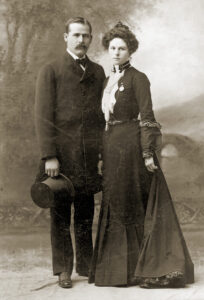Reviewed by Judy P. Sopronyi
By John Guy
Houghton Mifflin Company, Boston
To create this thoroughgoing biography of Mary Stuart, historian John Guy examined primary sources in the archives of France, England and Scotland, reading them in the original Renaissance English, French and Scottish. This in-depth research uncovered facts that bring new light to his subject.
Guy sees Elizabeth’s principal adviser, William Cecil, Lord Burghley, as Mary’s greatest enemy, not Elizabeth. If not for Cecil’s lobbying against Mary, the two queens might have had the meeting that Mary so ardently desired and managed to amicably rule their respective British lands. Cecil’s spy, Sir Francis Walsingham, intercepted the coded letters Mary wrote during her imprisonment, which were effectively used against her at her trial. And Guy makes the case that Cecil — not Mary — was behind the murder of Lord Darnley, Mary’s second husband.
Her French uncles, the Guises, are to blame for Mary’s downfall as well, for styling Mary and her first husband, Françoise, as king and queen of France, Scotland, England and Ireland. Their dynastic ambitions ensured that Elizabeth and Cecil would see Mary as a threat to Elizabeth’s reign.
Add Catholic–Protestant dissension and the perceived unsuitability of women as sovereigns, and Mary’s chances for ruling well and long were doomed. She nevertheless performed brilliantly. Mary showed tolerance for Protestants and even took on John Knox, and she gave as good as she got. She married her second husband, Lord Darnley, to ensure the succession — something Elizabeth was never able to do. And she decisively dealt with renegade lords, dashingly leading her loyalists into battle against them.
Guy opens his book with Mary’s day of execution, in an account of such shocking immediacy that it leaves the reader shaken. Mary staged this day as much as she was able, with her choice of dress, her crucifix, her defiant words and her dignity intact. The grisly vision of the first fall of the executioner’s ax upon her head rather than her neck, the appalling sight of her balding severed head rolling across the floor, her lips still moving, belongs to the spectators who were on hand for that awful event — not to Mary and her thrill-seeking and eventful life.Having secured our rapt attention, Guy then follows Mary’s story from her birth through her three ill-starred marriages, her flight to England, her years of captivity and finally the day when she steps across the threshold of her rooms at Fotheringay Castle to go to her execution. It’s quite a tale.
Along the way, it becomes obvious that Guy admires this woman, especially her intelligence, decisiveness and ability to think quickly under duress. We thrill along with him as Mary gallops determinedly off at the head of her lords in the Chase-About Raids. She was a woman of passion, and that, along with not knowing whom to trust, was her ultimate downfall.
In fact, there was almost no one Mary could trust, aside from the “Four Maries,” childhood friends who first accompanied her to France and mostly remained her closest associates. They, unfortunately, were in no position to be much help to her when the likes of the powerful Cecil was out to get her. And he did.
But as Guy points out in the epilogue, it was Mary’s son, James VI of Scotland — James I of England — who inherited the crown of England after Elizabeth’s death, and it is from Mary’s Stuart line that all of England’s sovereigns have descended ever since.




